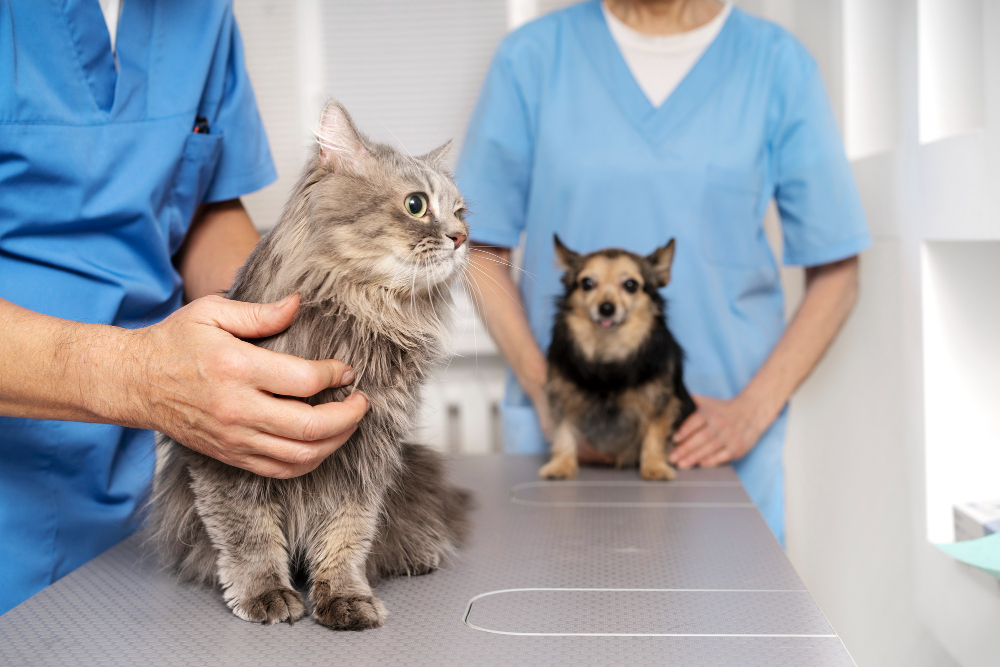Allergies in our beloved pets, dogs and cats, are increasingly becoming a global concern. These allergic reactions can stem from various sources, making diagnosis a complex process. While an itch alone doesn’t signify an allergy, frequent itching accompanied by other symptoms may indicate an underlying allergic condition.
Contrary to popular belief, allergies in dogs and cats are not rare. They can develop both acutely (one-off) and chronically (recurrent), affecting a significant number of pets worldwide. The prevalence of these allergies underscores the importance of awareness, early detection, and appropriate care.
Common Allergies in Dogs: Causes and Breeds Most Affected
Understanding a dog’s allergy requires knowledge of its nature and causes. Allergic dermatitis is a reaction in the dog’s immune system when it encounters a substance that triggers discomfort.
Common allergens include:
- Food
- Milk
- Flea bites
- Ticks
- Hygiene products
Furthermore, allergic reactions can be hereditary. Certain breeds such as Lhasa Apso, Pug, Shih Tzu, Poodle, Yorkshire, Bull Terrier, English and French Bulldog, Dalmatian, and Golden Retriever are more prone to allergies due to inbreeding. Dogs with hereditary allergies should not be bred to prevent the spread of the gene.
Identifying Dog Allergy Symptoms
Symptoms to watch for include:
- Intense itching
- Local inflammation
- Wounds
- Hair loss
- Secretion in the eyes
- Inflammation in the ears
- Excessive licking
If you suspect your dog has an allergy, seek immediate veterinary care for an accurate examination and diagnosis.
Leading Causes, Identification, and Owner Concerns Regarding Allergies in Dogs and Cats
- Food Origin
Some ingredients may have allergenic potential for dogs and cats, often linked to the type of protein provided. Genetically predisposed animals may trigger allergic reactions to specific proteins. Symptoms include itchy skin, fur loss, and bruises. Proper treatment requires professional guidance to identify the allergenic protein and recommend the best food. - Atopic Origin
This type of allergy causes skin inflammation, leading to lesions and itching. Diagnosis is thorough and slow, involving investigations to exclude other allergies. While there is no cure, clinical symptoms can be reduced with corticosteroids, antihistamines, and supplements to improve immunity. Additionally, understanding the role of vitamins and the risks of over-supplementation in pets is essential, and you can learn more about vitamins for dogs and cats here. - Dermal Origin
Common in animals exposed to different environments and parasites like fleas and ticks, this allergy is characterized by a hypersensitivity reaction to proteins in the saliva of these ectoparasites. Prevention includes antiparasitic collars, remedies to fight fleas and ticks, and cleaning the environment with specific products to combat these ectoparasites.
How to Identify Allergies in Your Pets
Monitor your pets for excessive itchiness, irritability, anxiety, red spots on the skin and eyes, and flea bites on the back and tail. If you notice these signs, consult a dermatology professional as soon as possible.
Can Allergies Cause Problems for Owners?
Allergies in pets do not affect owners, so you can continue to shower your pet with affection and love.
Dog Allergy Treatments
Treatment requires identifying the cause, which may take up to six months to yield results. Patience and adherence to professional guidance are essential. Continuous treatment may include medication, special shampoos, creams to relieve itching, and frequent veterinary visits for monitoring and preventing unwanted medication effects.
Conclusion
Allergies in dogs and cats are more than a mere inconvenience; they represent a serious health concern that demands careful attention and understanding from pet owners and professionals alike. The complexity of diagnosing and treating these allergies underscores the need for vigilance in monitoring pets for symptoms, seeking professional veterinary care, and adhering to prescribed treatments. From food allergies to dermal reactions, the multifaceted nature of these conditions requires a comprehensive approach that includes prevention, timely diagnosis, and ongoing care.
The role of pet owners in this process cannot be overstated. Regular check-ups, maintaining a clean environment, keeping anti-flea treatments up-to-date, and being aware of the specific needs and potential risks related to vitamins and over-supplementation are vital in safeguarding the health and well-being of pets. Collaboration with veterinary professionals, adherence to treatment plans, and a commitment to understanding the unique needs of each pet are essential components of responsible pet ownership.
In conclusion, the growing prevalence of allergies in dogs and cats calls for a concerted effort to educate, prevent, and treat these conditions. Through awareness, diligence, and a commitment to the health and happiness of our pets, we can ensure that they lead comfortable and fulfilling lives, free from the distress and discomfort that allergies can cause.














